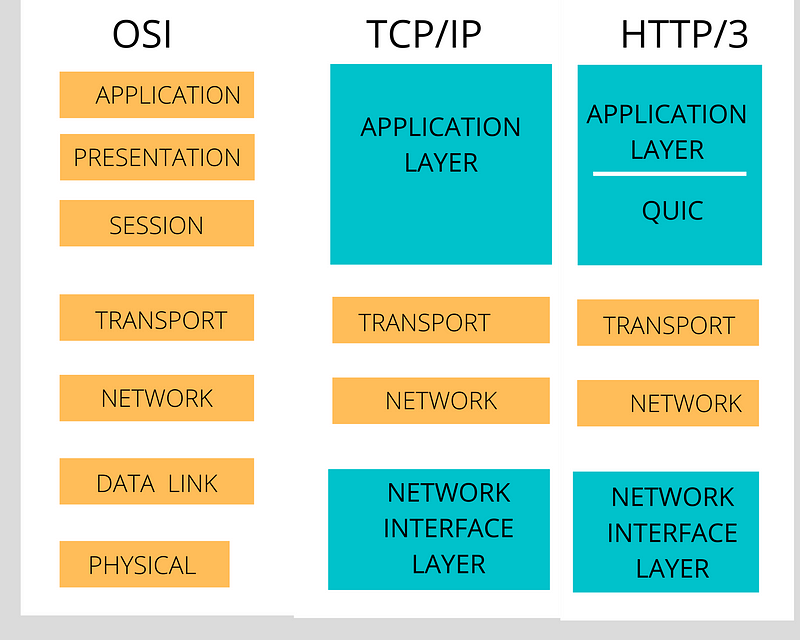HTTP Protocol Evolution: Transition from TCP to UDP
Written on
Chapter 1: Understanding HTTP Versions
The Hypertext Transfer Protocol (HTTP) is fundamental for data exchange on the internet. Each version of HTTP has been denoted by a number, with HTTP/1.1 being the most widely used, followed by HTTP/2, and the latest iteration, HTTP/3, which promises notable enhancements in speed and performance.
In this article, we will delve into several key areas, including:
- What is HTTP/1.1, and is it the initial version of HTTP?
- What enhancements were introduced in HTTP/2?
- What innovations will HTTP/3 bring?
For a quick recap, refer to our previous article that covers the basics of HTTP alongside the TCP/IP model.
Section 1.1: HTTP/1.1: The Most Commonly Used Version
Although HTTP/1.1 is the most prevalent version, it was not the first. Earlier versions, HTTP/0.9 and HTTP/1.0, laid the groundwork. One major limitation of these earlier versions was that connections were terminated right after a response was received. HTTP/1.1 remedied this by allowing persistent connections, enabling multiple requests and responses to occur over a single connection.
However, HTTP/1.1 still faced challenges, particularly with the head-of-line blocking issue.
Subsection 1.1.1: The Head-of-Line Blocking Issue

The head-of-line blocking problem occurs when HTTP/1.1 mandates that responses be delivered in the order they were received. If the first request is delayed or lost, all subsequent requests must wait, causing inefficiencies.
Section 1.2: Enhancements in HTTP/2
HTTP/2 tackled the head-of-line blocking problem by allowing multiplexing of requests over a single TCP connection. This advancement was significant as HTTP is an application-level protocol that operates above the transport layer in both the OSI and TCP/IP models.
While HTTP/2 addressed many issues, it did not completely resolve the head-of-line blocking since TCP’s error-checking mechanisms could still cause congestion if any data packets were delayed or lost. Another improvement was the ability to handle numerous requests through one TCP connection, overcoming the limitations of earlier versions. Additionally, HTTP/2 mandates the use of TLS for security.
Chapter 2: The Shift to HTTP/3
Section 2.1: Moving Away from TCP
Unlike its predecessors, HTTP/3 does not follow the TCP/IP model. To solve the head-of-line blocking problem inherent in TCP, HTTP/3 utilizes the User Datagram Protocol (UDP). UDP operates as a connectionless protocol, allowing for faster data transmission as it does not require the establishment of a connection or acknowledgment of received data.
However, this speed comes at a cost: UDP lacks the fault tolerance that TCP provides. To mitigate this, HTTP/3 integrates QUIC in the application layer, which ensures reliable data transmission.

QUIC combines the speed of UDP with the reliability needed for robust internet communications, effectively addressing the shortcomings of both protocols.
Conclusion
As of now, most major browsers support HTTP/3, although server-side implementation is still growing. Early adopters include Facebook and Google, with more servers expected to adopt this protocol in the near future.
For additional insights, visit PlainEnglish.io, subscribe to our weekly newsletter, and connect with us on Twitter and LinkedIn. Join our Community Discord and be part of our Talent Collective.